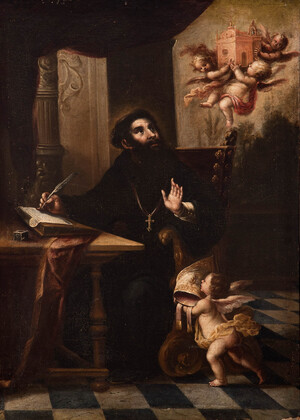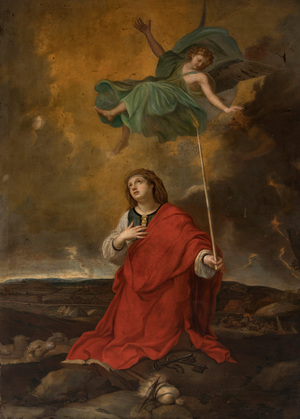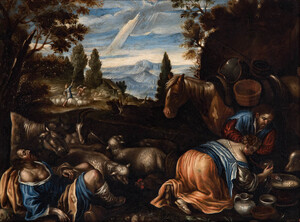The sky in the old painting
Baroque images that are so profound, dynamic and theatrical tend to focus the viewer’s gaze on the main character or scene, thus leaving the setting itself as an element that often goes unnoticed. Today’s public has partly lost the language to which they were accustomed in the 17th century, which is why we often leave the content of a painting uninterpreted. The sky plays a fundamental role in it.
The bucolic and fantastic landscapes that the scenes usually contain flee from the real world and take us to a scene that could be taken from a biblical or mythological episode. Here the representation of the sky acquires a very high value almost as if it were one more character since it marks a common thread in the narration or can even reveal the outcome of the painting.
In the case of religious painting, the sky is usually the manifestation of divine designs, we can well see the figures of angels or cherubs that descend to mortals to convey a message. These apparitions or miracles are key to understanding the iconography of each saint since through the attributes of the main character and the celestial beings we can perfectly recognize the episode. Two clear examples of this type of use in pictorial composition can be found in the works in our next auction, “the vision of Saint Augustine” attributed to the Sevillian painter Andrés Pérez and “Santa Genoveva de Paris” from the circle of Charles Lebrun. The church carried by the angels in the first scene makes a comparison between the building of worship and the Church itself as an institution as an example of the saint being surprised in his study by some envoys of God who would transmit the message of leading it as a bishop . In the case of Saint Genevieve we observe the moment in which she, as a praying person, receives from an angel the revelation of how to save Paris from the siege of the Huns. The angel blows out the young woman’s candle, thus indicating which direction to take to guide her people.
In a more subtle and discreet way to the celestial apotheosis of angels and God, there is the resource for painters to show the same message through meteorological phenomena and nature. Storms, light gaps between thick clouds or of course lightning create a more delicate atmosphere, but with an equally clear content. The peace and calm that is evident in “Jacob’s dream” gives the appearance of a completely everyday and timeless scene. A shepherd resting with his flock in a bucolic setting. In the background of the landscape, almost unnoticed, we see the sky tear itself apart with a halo of light alluding to the divine ladder that is reflected in the passage from the Old Testament.
These three paintings are a brief example of how the sky in baroque painting has an important narrative value, beyond the effects, the apparent aesthetic character, its use in the composition of the old masters is not a product of chance or simple contemplation of beauty. Perhaps when we stop in front of a painting like these, we should do like Jacob, Agustín or Genoveva, look at the sky and pay attention to what message it has for us.








